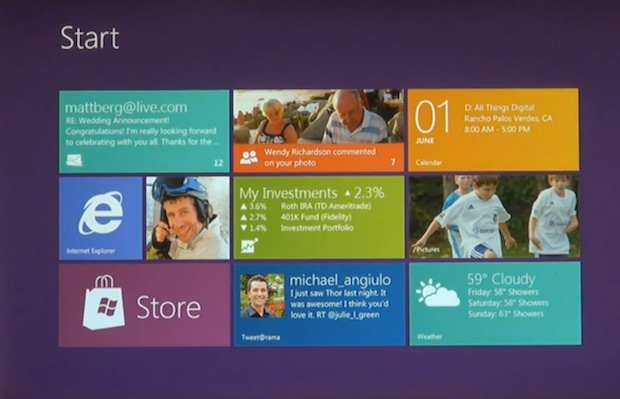Microsoft recently gave the public a sneak peak to its new tablet, the Surface. On first look, the Surface is sleek and stylish. It has a built-in kick-stand and a snap-on keyboard (allowing it to be a laptop as well). Surface will also come with the new Windows 8 operating system. Initial public opinion of the Surface is very favourable and it has been touted as the next consumer favourite.
Microsoft is planning to release two different versions of the Surface, the Surface RT and the Surface PRO. The Surface RT is a slightly stripped down version of the PRO, aimed for casual tablet users. It uses a NVIDIA Tegra 3 Quad Core processor and comes with a 10.6 inch display. Onboard memory options include 32 GB and 64 GB. The Surface PRO runs on a much stronger Intel Ivy Bridge Core i5 Processor. It has the same sized display. Onboard memory options include 64 GB and 128 GB. The Surface PRO is strong enough to run top notch 3D games such as the recently released Diablo 3.
However, as much as everyone is raving about the new tablet, the real question is: How does the Surface compare to other heavyweights on the market, and especially the IPAD 3?
CASING/DURABILITY
Apple has long been praised for its quality hardware and this is no different for its iPad line. Microsoft understood this and in publicizing for its new tablet, has greatly lauded the "VaporMG" finish on the Surface's casing. The company claims that this finish will not only give the Surface more aesthetic and textile appeal, but also increased durability and better grip. So what exactly is the "VaporMG" finish? According to Microsoft, this casing is made of moulded magnesium and various other metals. The use of magnesium allows it to be extremely thin (down to 0.6 mm in some areas) while still being light and strong.
Not only does the Surface have a quality case, but the screen is also made of Gorilla Glass. Gorilla Glass has a renowned industrial reputation for being thin yet VERY damage resistant. For Apple's iPad, it is unknown whether Gorilla Glass is used in the screen (as seen from this article:
http://home.howstuffworks.com/gorilla-glass-used-in-an-ipad1.htm).
OPERATING SYSTEM
Apple has constantly been criticized for not releasing the OS X on the IPad. The iOS was originally designed for smaller mobile devices like the iPhone and iPod Touch and this limited capability of the iOS is unfavourable to more serious tablet users. The Surface Pro will offer Windows 8 Pro, which has the full OS experience.
SCREEN SIZE AND DISPLAY
Both versions of the Surface (all 10.6 inch) have a larger screen size than the iPad's 9.7 inch.
The iPad's screen resolution, however, outshines both versions of the Surface tablet. Surface RT has a 720p resolution while Surface PRO has a 1080p resolution. The iPad 3's pixel coverage is 2048x1536.
THICKNESS AND WEIGHT
The iPad 3 has about the same thickness as Surface RT (as 0.37 inches thick) while the Surface PRO is 0.53 inches thick.
The Surface RT weighs 1.5 pounds while the PRO weighs 1.9 pounds. Both are heavier than the iPad 3's 1.4 pounds.
PORTS

One of the most attractive advantages the Surface has over the iPad 3 is that there are many more different types of external ports on the Surface. The iPad 3 has only the standard 30-pin dock connector port. Both versions of the Surface come with a USB port, a microSD slot, and a Micro HDMI port.
ACCESSORIES
The Surface comes with a cover that also acts as a keyboard with a touchpad. The keyboard is only 3 mm thick. It also has a built-in kickstand at the back which probs the tablet up at a convenient 22 degree angle. Both features have been greatly praised by critics.
As for Apple, it has many third party companies producing accessories for the iPad but this requires extra time and money to find and buy them.
PRICE
The Surface tablets is touted to be somewhere between $ 600 and $ 1000, a price range very similar to the iPad 3. A 64 GB iPad 3 with Wifi and Cellular currently sells for CA $ 849.99 at Bestbuy.
VERDICT
It is ultimately your choice as the reader to decide what tablet appeals to you more. Personally, I think that the Surface tablets are a lot better compared to the iPad 3. With similar (if not better) quality levels of hardware, way stronger processing power, USB, microSD, and HDMI ports, the trade off for a slightly heavier and thicker build is worth it. The price difference is also not expected to be large.
































